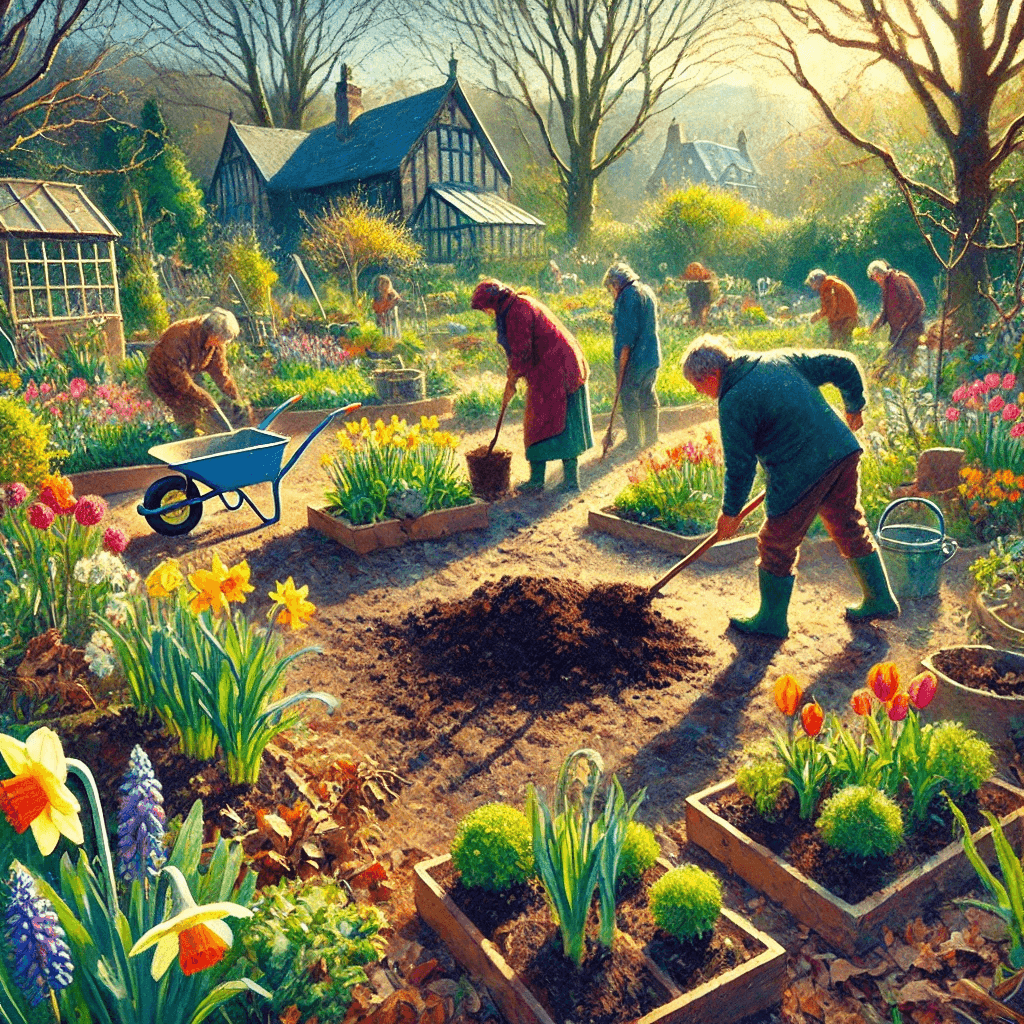Spring is the season of growth and renewal, making it the perfect time to prepare your garden. With a little effort and planning, you can create a beautiful space filled with healthy plants, vibrant flowers, and delicious vegetables. Preparing your garden early ensures everything thrives during the growing season. Here are the best ways to get your garden ready for spring.
Clean Up Your Garden
A clean garden is the foundation for a healthy growing environment. Start by removing anything that might hinder new growth.
Remove Debris and Weeds
Clearing out debris and weeds creates space for plants to grow.
- Rake up fallen leaves, branches, and other debris from garden beds.
- Pull out weeds, including their roots, to prevent regrowth.
- Dispose of plant material properly to avoid spreading pests or diseases.
This step ensures your garden beds are free from clutter and ready for planting.
Prune Dead or Damaged Plants
Pruning encourages new growth and prevents the spread of disease.
- Use sharp pruning shears to cut off dead branches.
- Trim overgrown shrubs to maintain their shape.
- Remove any plants damaged by winter frost.
Healthy pruning helps plants thrive and look their best.
Check for Pest Damage
Inspecting plants early can save you trouble later.
- Look for signs of pests like holes in leaves or discolored spots.
- Remove affected parts of plants to stop pests from spreading.
- Consider using natural pest control methods to protect your garden.
A pest-free garden is crucial for healthy plants.
Prepare Your Soil
Healthy soil is essential for a thriving garden. Proper soil preparation ensures your plants get the nutrients they need.
Test Your Soil
Testing the soil gives you an idea of its condition.
- Use a soil testing kit to measure pH levels and nutrient content.
- Adjust pH by adding lime to raise it or sulfur to lower it.
- Add fertilizers based on the nutrient deficiencies found.
Understanding your soil’s needs helps create an ideal growing environment.
Add Compost or Organic Matter
Organic matter enriches the soil and improves its structure.
- Spread a layer of compost, aged manure, or leaf mold over the garden beds.
- Work it into the soil using a garden fork or tiller.
- Aim for a mixture that is loose and crumbly.
Enriched soil provides essential nutrients for plants to thrive.
Till or Loosen the Soil
Loose soil allows roots to grow deeply and access water easily.
- Break up compacted soil using a garden fork or tiller.
- Remove large clumps and rocks as you go.
- Level the surface to create an even planting bed.
This step prepares the ground for planting and encourages healthy root development.
Plan Your Planting
Planning ahead helps you make the most of your garden space and growing season.
Choose Plants for Your Climate
Selecting the right plants ensures better growth.
- Research flowers and vegetables that thrive in your local climate.
- Consider native plants for low-maintenance options.
- Use hardiness zone maps to guide your choices.
Choosing suitable plants makes gardening easier and more rewarding.
Create a Planting Schedule
A schedule keeps your garden on track throughout the season.
- Start seeds for crops like tomatoes and peppers indoors.
- Directly sow fast-growing plants like radishes and beans outdoors.
- Keep track of planting dates and harvest times.
With a schedule, you can manage your garden efficiently.
Arrange Garden Layout
A well-planned layout maximizes space and sunlight.
- Group plants with similar water and sunlight needs together.
- Leave space between rows for easy maintenance.
- Include companion plants to improve growth and deter pests.
Good organization leads to a productive and beautiful garden.
Maintain Garden Tools and Equipment
Well-maintained tools make gardening easier and more efficient.
Clean and Sharpen Tools
Clean tools last longer and work better.
- Wash dirt and rust off garden tools with water and a scrub brush.
- Sharpen blades on pruners, shears, and shovels.
- Apply a thin layer of oil to prevent rust.
Proper care saves money and effort in the long run.
Check Irrigation Systems
Working irrigation systems keep your garden hydrated.
- Inspect hoses and sprinklers for leaks or blockages.
- Test drip irrigation systems for clogs.
- Replace or repair any damaged parts.
A functional watering system ensures plants receive consistent moisture.
Prepare Mulching Materials
Mulching helps retain moisture and suppress weeds.
- Gather organic mulch like wood chips, straw, or grass clippings.
- Spread mulch around the base of plants after planting.
- Avoid piling mulch against plant stems to prevent rot.
Having mulch ready saves time during planting season.
Start Planting Early Crops
Planting early crops gets your garden off to a strong start.
Plant Cool-Season Vegetables
Cool-season vegetables thrive in early spring.
- Sow seeds for crops like lettuce, spinach, and carrots.
- Choose varieties labeled as cold-hardy.
- Monitor soil temperature to ensure optimal germination.
These crops can handle cooler temperatures and grow quickly.
Use Row Covers or Greenhouses
Protect young plants from harsh conditions.
- Cover plants with row covers to shield them from frost.
- Use a small greenhouse for extra warmth and protection.
- Remove covers during the day to allow sunlight in.
This ensures your plants stay safe while adjusting to the season.
Conclusion
Preparing your garden for spring takes effort, but it pays off with a thriving outdoor space. Cleaning, soil preparation, planning, and tool maintenance set the stage for a successful growing season. Starting early crops helps you enjoy the benefits of gardening sooner. Follow these steps to make your spring garden a beautiful and productive retreat. By investing time now, you’ll enjoy healthier plants and a bountiful harvest all season long.




